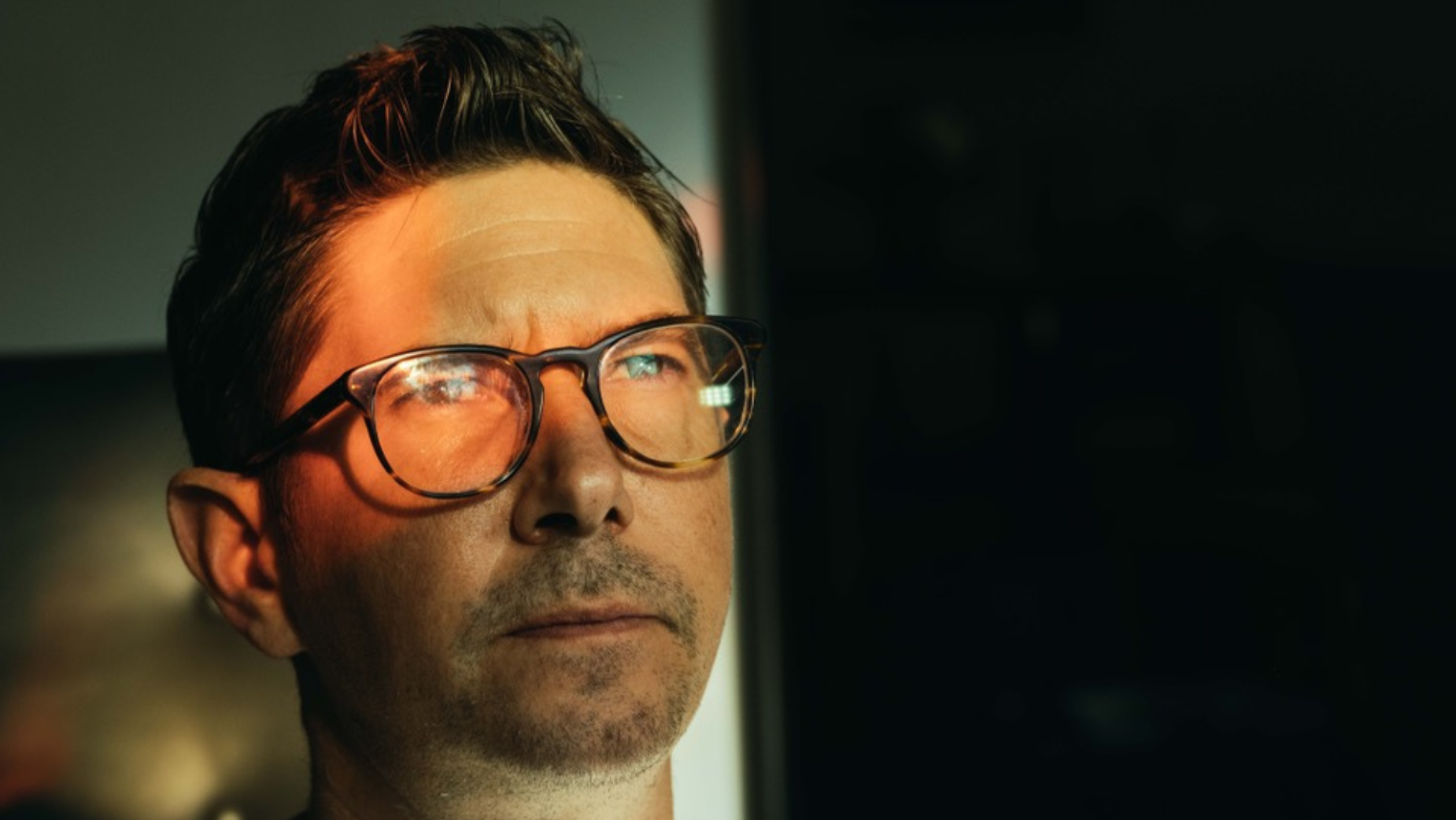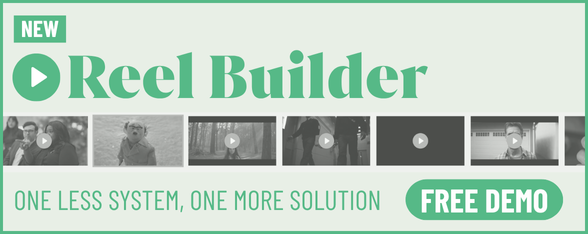
The Directors: Mark Rozeluk

With deep roots in both digital and traditional advertising, Mark Rozeluk brings a story-first approach to his work. From developing fulsome and channel-agnostic campaigns for some of the world’s most iconic brands to building digital experiences and immersive platforms, he strategically connects all touch-points to deliver a cohesive brand narrative. Most of his career has been spent as a creative director agency-side in Toronto.
In 2022, Mark founded Manic Pixie, a strategic storytelling company that bridges creative ideation and campaign development with streamlined end-to-end production.
Name: Mark Rozeluk
Location: Toronto
Repped by/in: Manic Pixie
Awards: ROI over awards
LBB> What elements of a script sets one apart from the other and what sort of scripts get you excited to shoot them?
Mark> I’m drawn to scripts that are a bit fluid and give you some room as a director to play with a talent’s performance on the day. Opportunities for levity and humour, where appropriate, are also something I look for in a script. Is the dialogue playful and believable? I’m also a big fan of improv on the day and giving the actors license to try things that may not have been reflected in the scripted. Often, happy accidents end up making the cut...
Given our model at Manic Pixie, where we develop the creative through to production, I’m very close to the writing process. I prefer directing spots I’ve had a hand in writing because I can shape the idea rather than interpret someone else’s vision. It also allows me to stay closer to the strategy and brand brief.
LBB> How do you approach creating a treatment for a spot?
Mark> It depends on the project and the client. Film, like music, is a language most people are relatively familiar with, so I leverage those references early in the development phase. We recently shot a Thanksgiving spot and used the dinner scene in 'National Lampoon’s Christmas Vacation' as part of the treatment. It’s a movie many people have seen and are familiar with, so it tracked and helped convey the mood we were going for.
Other times, it may be a simple piece of music or an animatic. Music is so vital in setting the tone and pulling on the appropriate emotional strings, so it’s a good place to start as well.
LBB> If the script is for a brand that you're not familiar with / don’t have a big affinity with or a market you're new to, how important is it for you to do research and understand that strategic and contextual side of the ad? If it’s important to you, how do you do it?
Mark> Coming from the advertising world as a creative director, your job is to immerse yourself in every facet of a brand, so I take the same approach with directing.
Any creative in today's industry should also be able to straddle the strategy side of things and think that way. For example, decisions such as casting are as strategic as they are creative when you’re looking to reach a particular audience.
Even editorially, a TV spot has a very different function than a social ad, so I’m methodical about what is ending up where and developing channel-specific content that is contextually relevant to the platform.
LBB> For you, what is the most important working relationship for a director to have with another person in making an ad? And why?
Mark> First and foremost, trusting your crew/team and letting them do what they do best. I never understood hiring subject-matter experts and then micro-managing them. So much of directing is assembling and casting a team you know works well together and is suited for the project. It shows on-screen when people are having fun on set (the crew, talent, and client).
Mark (Delottinville) and I always joke that we are just as much in the hospitality business when we are on set as we are in the content business – so having a smooth-running day where everyone is celebrating in bringing a vision to life, is always the goal.
Secondly, making an ad is a highly collaborative process. You need to be open to other ideas from everyone. Clients are going to see things very differently from you, and that can be a pro much more than a con.
LBB> What type of work are you most passionate about - is there a particular genre or subject matter or style you are most drawn to?
Mark> I love working on ads that have an exciting or interesting component to them, be it a misdirect in the story or a technical aspect for how they are shot.
I’m drawn to logistically challenging executions like seamless one-shots that involve a lot of planning and choreography or technically interesting spots (Staples “Start to Smart” was one of those for me) that use a lot of practical sets with in-camera effects.
I love doing comedy as well, though it’s a difficult sell sometimes if a brand has typically not played in that space before.
LBB> What misconception about you or your work do you most often encounter and why is it wrong?
Mark> The biggest challenge for directors, I think, is landing work in a vertical in which they have little to no experience in.
For example, I haven’t done any directorial work in the automotive space, so the likelihood of being selected to do one is probably slim to none. It’s a misconception that just because you haven’t done a car ad before that you aren’t capable of doing one.
Clients and agencies should focus more on aesthetic, style, approach, etc., that a director can bring. The product is a piece of the larger story.
I’d say the other thing is related to budget. I developed Manic Pixie to address the whitespace in the industry for clients and brands that don’t have deep pockets and need evergreen content, so comparing a relatively low-budget spot to something that had significant dollars behind it isn’t always a fair comparison.
Being able to solve budgets of varying ranges is something we’ve really honed over the past few years.
LBB> Have you ever worked with a cost consultant and if so how have your experiences been?
Mark> We’ve never worked with a cost consultant specifically, given our model is designed to reverse engineer the typical process.
I pull in Mark (Delottinville) early in the ideation process to vet ideas based on an established budget so we aren’t presenting (and selling) clients’ ideas that aren’t doable with the dollars we have.
I much prefer knowing what we have to work with and then providing solutions that fall within the scope, than watering down an existing idea because because the money to do it right isn’t there.
LBB> What’s the craziest problem you’ve come across in the course of a production – and how did you solve it?
Mark> Productions are like weddings in that they inevitably never go to plan - even the most organised shoot is met with unexpected hurdles.
I’ve done a fair bit of work with athletes with brand contracts. The typical window is four hours for an athlete to be available on-set. After methodically planning every shot down to the minute, our talent arrived two hours late. So, four hours suddenly became two. We went through our shot list and decided to scrap the original plan and shoot everything on a Steadicam, compressing the needed footage.
It certainly wasn’t ideal given what we’d planned for, but it allowed us to make the day, and I don’t think anyone sweated it aside from our DP, producer, and myself.
LBB> How do you strike the balance between being open/collaborative with the agency and brand client while also protecting the idea?
Mark> It’s the job. Part of our push to be open and collaborative at the beginning of the process is to mitigate many of these things into production. The balance is in fighting for what you feel strongly about and letting go of others. I try to be as transparent as possible early. I’ll present options and concrete rationales for my recommendations and provide solutions where I can.
Ultimately, it’s the agency/client who has hired you, so you need to roll with it at a certain point. In most cases I’ll suggest shooting multiple options to appease everything and then see what shakes out in the edit.
LBB> What are your thoughts on opening up the production world to a more diverse pool of talent? Are you open to mentoring and apprenticeships on set?
Mark> There’s a comfort in working with people who I’ve worked with before and I trust. We also try to balance that with a diverse group of people. My creative team is all female – while crews tend to lean more male. I’ve often had friends and kids interested in the filmmaking process attend shoots, and I benefited from that in film school. I get a lot of random requests on LinkedIn to connect or chat, and I always entertain those.
It’s certainly a different world from when I started out, so I’ll put in the effort if someone else does.
LBB> Your work is now presented in so many different formats - to what extent do you keep each in mind while you're working (and, equally, to what degree is it possible to do so)?
Mark> It’s a great question. Client expectations are that you are framing and shooting for every format and aspect ratio on the day, but we all know that isn’t ideal (or even possible). I also don’t believe the formats are necessarily interchangeable. I like approaching social as its own beast and having specific scripts and shot lists suited to the format.
Time and budget don’t always allow for this, but being able to develop channel-specific content that is contextually relevant is always the goal.
LBB> What’s your relationship with new technology and, if at all, how do you incorporate future-facing tech into your work?
Mark> Technology is a tool. It works so long as it’s working for you. Sometimes, it makes sense, and other times, it doesn’t. An example of this is leveraging a volume (virtual studio). There’s a level of control it brings to developing a virtual set environment and saving time in post. Still, there’s also a considerable amount of work and planning that goes into shooting this way, so you need to weigh the pros/cons in the early stages of production to decide the best path.
There’s also been a lot of discussion around AI, where some clients believe it can solve anything and everything – but it’s still very much in its infancy, so there’s a bit of education that needs to happen around it. I’m not opposed to any of it so long as it’s helping and not hindering the work.















